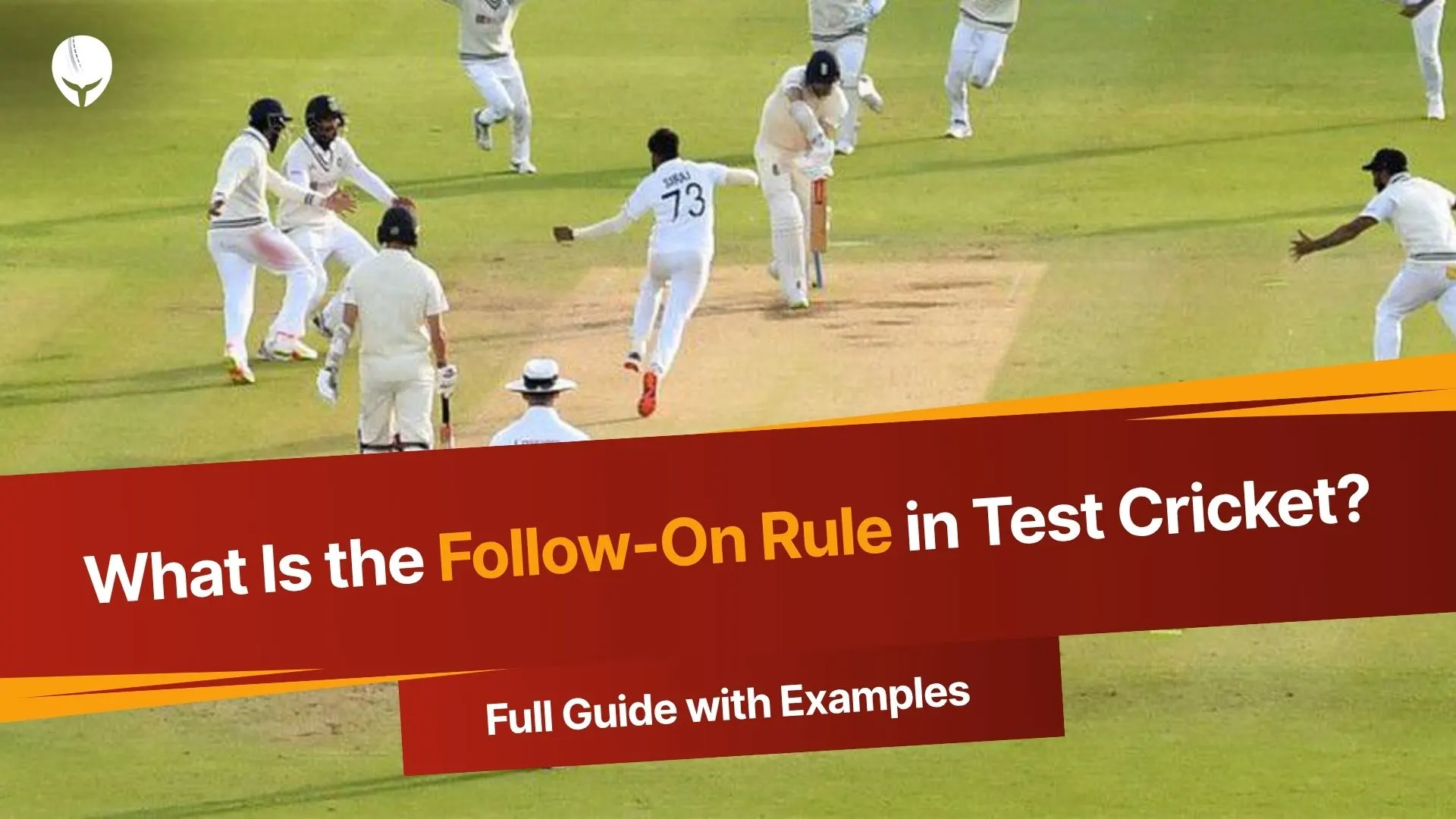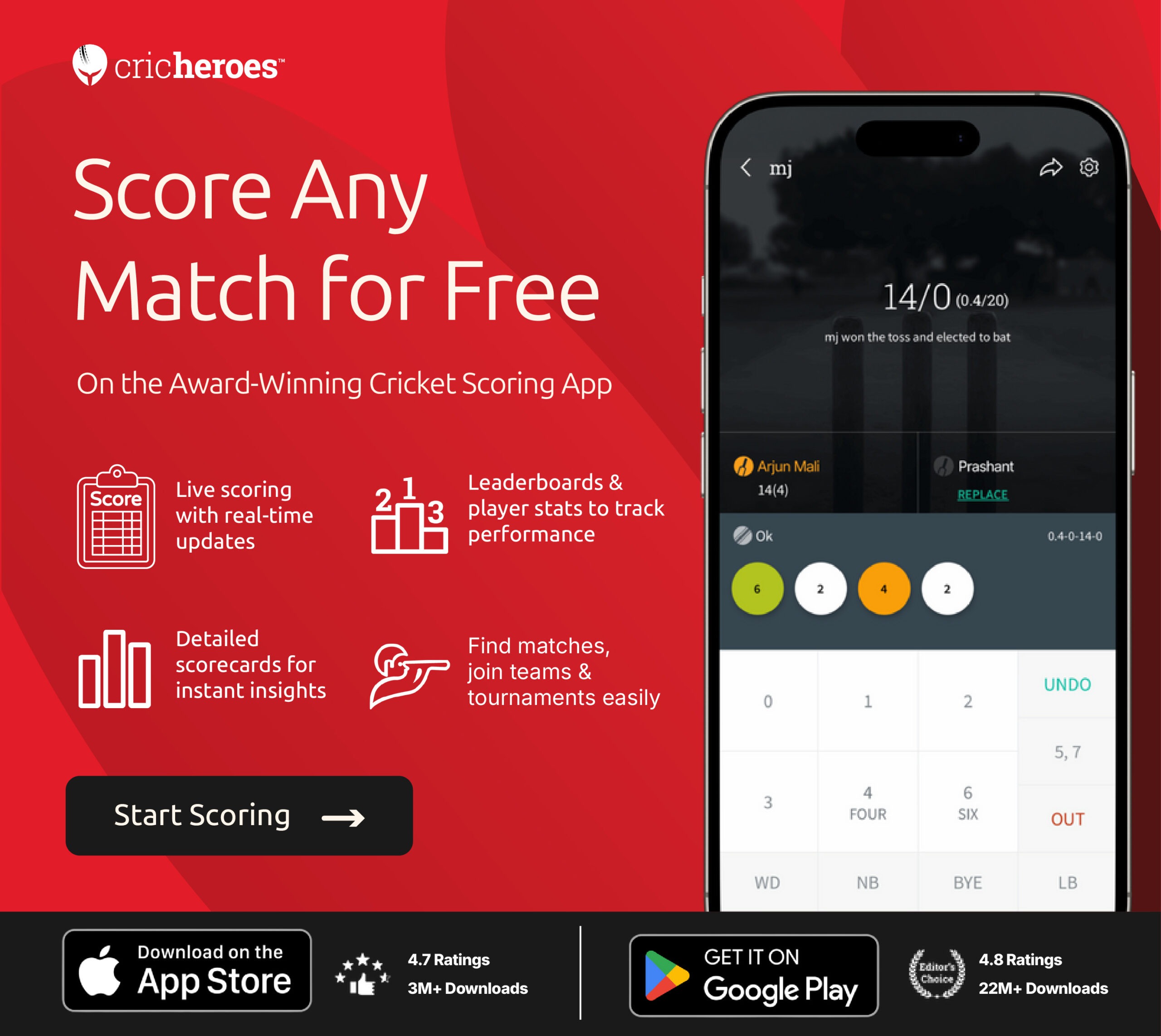If you’ve ever watched a Test match and heard the term “follow-on,” but didn’t know what it meant—you’re not alone. Many fans, especially new ones, find the follow-on rule in Test cricket confusing. It sounds complex, but it’s actually simple when broken down clearly. This guide will help you understand what it is, when it applies, and why teams use it. Whether you’re a beginner or a casual fan, you’ll walk away with a clear picture of how the follow-on works—without the jargon or fluff.
What Is the Follow-On Rule in Test Cricket?
The follow-on rule in Test cricket allows the team that bats first to make the other team bat again immediately—if the first-innings score gap is big enough.
In a five-day Test match, if Team A bats first and scores 450 runs, and Team B scores less than 250 in their first innings (a 200-run lead), then Team A can ask Team B to bat again right away.
This skips Team A’s second innings for the moment and puts pressure on Team B to perform better in their second innings.
When Can a Team Enforce the Follow-On?
The rule depends on how many days the match is scheduled for. Here are the follow-on lead requirements:
- 5-day match: 200-run lead
- 3 or 4-day match: 150-run lead
- 2-day match: 100-run lead
- 1-day match: 75-run lead
This rule is part of Law 14 of the official MCC Laws of Cricket. The captain of the team that batted first decides whether to enforce it.
Why Do Teams Enforce the Follow-On?
Teams use the follow-on rule to save time and increase their chances of winning. Here’s when it makes sense:
- The pitch is breaking down and will get worse to bat on.
- Bowlers are still fresh and confident.
- There’s rain or time loss, and the team needs more time to bowl the other team out.
- The opposition has struggled and looks mentally down.
But it’s not always used—even with a lead—because it can backfire.
Pros and Cons of Enforcing the Follow-On
Pros:
- Keeps pressure on the other team
- Saves time if weather may interfere
- Chance to win by an innings
Cons:
- Fatigues your bowlers quickly
- Risk of the other team making a big comeback
- If the pitch gets easier, it helps the batting team
Example:
In 2001, India were asked to follow on by Australia in Kolkata. India fought back and won the match. It’s one of the most famous examples of the follow-on going wrong.
How to Calculate the Follow-On in a Test Match
Use this simple method:
- Note the first innings scores of both teams.
- Subtract the second team’s score from the first team’s.
- If the lead is 200 or more (in a 5-day match), follow-on can be enforced.
Example:
- Team A: 410 all out
- Team B: 208 all out
- Lead = 410 – 208 = 202
Since the lead is more than 200, Team A can enforce the follow-on.
Try our Follow On Calculator – it’s free and instant.
Famous Matches Where the Follow-On Changed Everything
1. India vs Australia – Kolkata, 2001
Australia made India follow on after gaining a 274-run lead. Team India, led by VVS Laxman and Rahul Dravid, turned the match around with a 376-run partnership. India won by 171 runs. It’s still remembered as one of the biggest turnarounds in Test cricket history.
2. England vs Australia – Headingley, 1981
Known as “Botham’s Test,” England followed on after trailing by 227 runs. Ian Botham’s explosive innings turned the game, and England won. It was a shock defeat for Australia and a huge boost for England.
3. New Zealand vs England – Wellington, 2023
England enforced the follow-on after leading by 226 runs. New Zealand came back and won the match by 1 run—only the second time in Test history a team won after following on.
These matches show why enforcing the follow-on is always a bold decision. It can lead to big wins, but it also comes with real risks.
Why Some Captains Choose Not to Enforce the Follow-On
Even with a 200+ run lead, captains sometimes decide not to use the follow-on. Here’s why:
- Bowler fatigue: After bowling a full innings, fast bowlers are tired. Giving them rest can be smarter.
- Pitch conditions: If the pitch is getting worse, batting first gives your team the better surface.
- Weather forecast: Captains factor in rain delays or limited playtime.
- Mental edge: Batting again allows the team to build a lead without pressure.
Captains also think about the mental side of the game. Enforcing the follow-on can send a strong message—but it can also backfire if the other team responds well.
Michael Vaughan, former England captain, once explained this clearly:
“The follow-on is a brave move. It’s not just about numbers—it’s about timing, confidence, and reading the match right.”
Example:
In 2023, Ben Stokes chose not to enforce the follow-on in New Zealand, even with a big lead. England lost. But his decision wasn’t wrong—just risky.
Conclusion
The follow-on rule in Test cricket is simple, but using it is a big call. It gives the leading team a chance to finish the match early, but it can go wrong if the other team fights back. Understanding this rule adds a new layer to how you watch and enjoy Test matches.
Did you enjoy this explanation? Share your thoughts in the comments or let us know your favorite follow-on moment in Test cricket history.
FAQ’s
1. What is the follow-on rule in Test cricket?
It lets the team with a large first-innings lead force the other team to bat again right away.
2. How many runs are needed to enforce the follow-on?
In a 5-day match, the team must lead by at least 200 runs.
3. Who decides to enforce the follow-on?
The captain of the team that batted first makes the call.
4. Can a team refuse to enforce the follow-on?
Yes. It’s optional, not automatic.
5. How does the follow-on affect the match?
It adds pressure on the other team and can lead to quick wins—but it carries risks.
6. Has any team won after following on?
Yes. India in 2001 and New Zealand in 2023 are famous examples.
7. What is Law 14 in cricket?
Law 14 defines the follow-on rule in the official MCC Laws of Cricket.
8. Can the follow-on be enforced in ODI or T20?
No. It only applies to multi-day matches like Tests.
9. Does the follow-on always lead to a win?
No. It often helps but can backfire.
10. Why is the follow-on rarely used today?
Captains are cautious due to fitness, pitch behavior, and past match outcomes.

I am Manan Joshi , SEO All-Rounder at CricHeroes.
CricHeroes is the ultimate Cricket Scoring App and the world’s only true Cricket Network. With more than 4 crore+ registered cricketers using CricHeroes to Live Cricket Scores for their local cricket matches and tournaments, CricHeroes is already the #1 Cricket Scoring App Globally!
We also proudly present “CricHeroes Store” by CricHeroes, a dedicated shop for cricket apparel and accessories, helping players gear up for their game.














